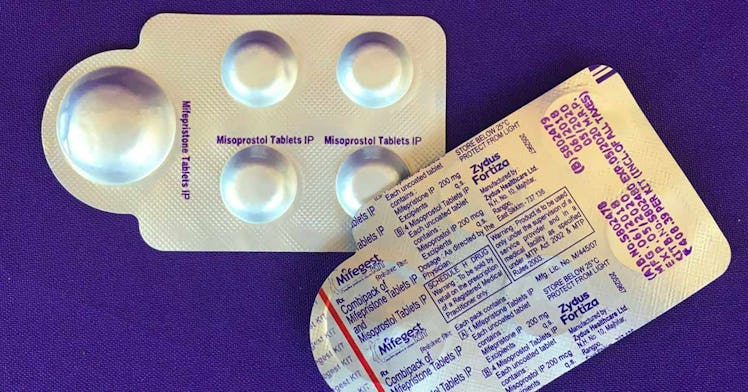Telemedicine Abortions Are Now Legal. Here’s What That Means.
Abortion pills will now be available via telehealth, but only until the end of the pandemic.

The FDA announced earlier this year that pregnant people will now be able to receive the abortion pill through telemedicine. The Biden administration lifted the Trump-era restrictions on telemedicine abortion, which doctors have long been fighting for, because of the unnecessary COVID-19 risk of going into a health clinic for a medical abortion.
“Those in need of an abortion or miscarriage management will be able to do so safely and effectively by acquiring mifepristone through the mail — just as they would any other medication with a similarly strong safety profile,” Maureen Phipps, the CEO of the American College of Obstetricians and Gynecologists (ACOG), told Politico.
Why Abortion Pill Access Matters
The battle for increased access to the abortion pill has been a long one. In January, the Trump administration won approval from the Supreme Court to reinstate restrictions on telemedicine abortion, or receiving the abortion pill mifepristone through the mail. ACOG, the American Medical Associations, and other high-profile medical groups have been lobbying the Biden administration to permanently reverse that decision. They’ve got what they wanted for the time being, but the FDA could restore the ban after the pandemic (finally) ends.
Demand for abortion pills has increased in conservative states in recent years because Republican lawmakers have made it difficult to access surgical abortions. The abortion pill, also known as medical abortion, was used in 5 percent of abortions in 2001. By 2017, it was used in 39 percent of all abortions, according to the Guttmacher Institute, a research organization that supports abortion rights.
There is strong evidence that the abortion pill, which can only be used in the first 10 weeks of pregnancy, is safe for use at home. Mifepristone “has very few risks at all,” Jen Villavicencio, a health policy fellow with ACOG, told Politico. “It is more safe than over-the-counter medications like ibuprofen and Tylenol. We know this medication can be safely administered via telemedicine because we’ve studied it.”
The Rule Change Is Only Temporary
Reproductive justice organizations are celebrating the win and are already planning a push to make the ruling permanent. “This is a long overdue first step, but it’s far from enough,” tweeted the Guttmacher Institute. “@US_FDA should now review all the restrictions it currently places on abortion pills in light of the full body of scientific evidence and real-world use, and modify or remove them accordingly.”
Medical abortions can be done at home, usually with two pills. The first is mifepristone, which is what the FDA has allowed pregnant people to receive via telemedicine. This pill blocks progesterone receptors, which are necessary to maintain a pregnancy. The second pill is misoprostol, which causes the uterus to expel the pregnancy tissue. Medical abortion is successful 93-96 percent of the time, according to Planned Parenthood.
The FDA ruling allows telemedicine abortion only in states that have not already banned the practice. But conservative groups have been working hard to make it illegal. Six states have passed laws banning the practice, and 15 more states have effectively done so by requiring the prescribing medical provider to be present during the abortion.
Getting an abortion can be nerve-wracking. Now, many pregnant people won’t have to add the worry of contracting COVID-19 at the health clinic. Extending the ruling beyond the pandemic and to all states would increase access to abortions, particularly for people who don’t have transportation to an abortion clinic. It would also create an alternative to the stigma of going to an abortion clinic. Instead, the procedure could be completed safely from the comfort of a person’s own home.
This article was originally published on